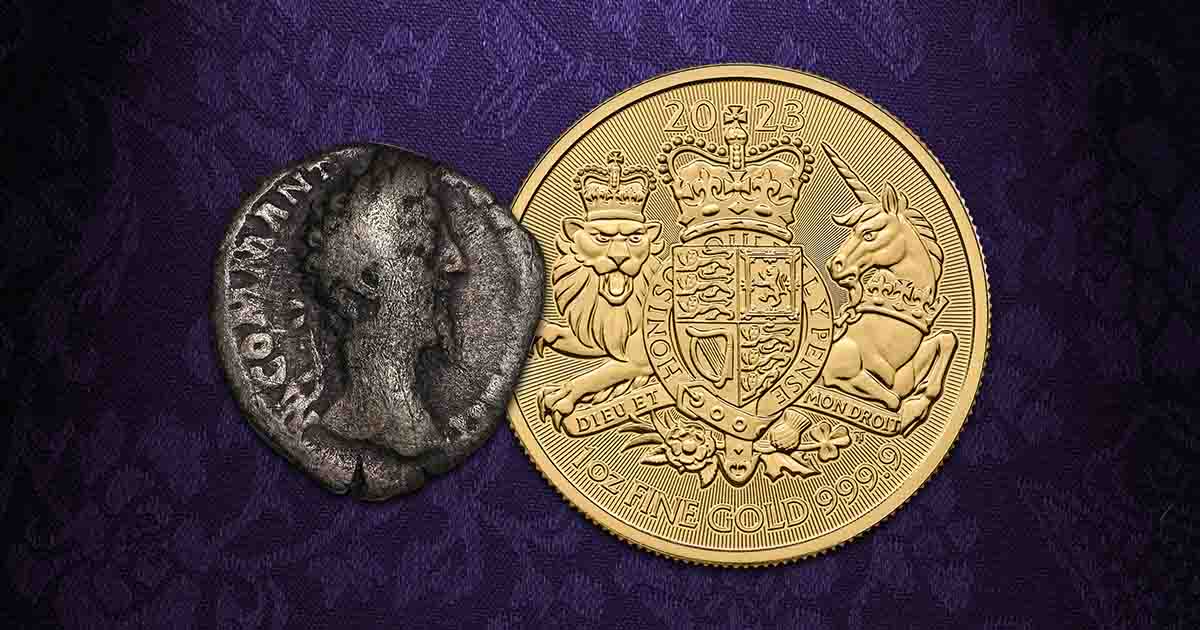Numismatics and bullion are both forms of investing in precious metals such as gold, silver, platinum, and palladium, but they have significant differences. The most significant difference is that most often, numismatics is compelling to those who are interested in rare and historical coins. Bullion collectors buy precious metal bullion for its intrinsic market value.
What is Numismatics?
Numismatics is the study or collecting of currency, including coins, paper money, and sometimes related items such as medals. When it comes to investing, numismatic coins have value beyond the value of their metal content due to their rarity, historical significance, condition, or beauty.
Numismatics examples: Byzantine Empire coins, Ancient Greek Coins, and Civil War tokens.
Numismatics Enthusiasts
Collectors and investors often seek out these coins because they can offer significant value. The value of numismatic coins is determined through factors such as the coin’s condition, rarity, age, and historical significance.
Investing in numismatic coins often requires a deep understanding of the coin market, including the ability to authenticate coins and assess their condition accurately. It is more akin to art collecting than traditional investing.
Investing in Numismatics Pros and Cons
| Pros | Cons |
| Potential for High Returns | Requires Specialized Knowledge |
| Historical and Artistic Interest | Less Liquidity |
| Low Correlation with Other Investments | Risk of Forgery |
Before investing in numismatics:
- Research and learn about coin grading, historical periods, and rarity to make informed decisions.
- Consider your budget and how much you are willing to invest.
- Buy from reputable dealers or auction houses to avoid counterfeits.
- Get coins authenticated and graded by professional organizations like the Professional Coin Grading Service (PCGS) or the Numismatic Guaranty Corporation (NGC) to ensure their quality.
Our Most Popular Ancient Silver Numismatic Item: Mauryan Empire Silver Karshapana (322-185 BC).
These are ancient Indian coinages from the Mauryan Empire founded after the death of Alexander the Great. The empire stretched from Iran to Afghanistan at its peak power.
What is Bullion?
Bullion refers to precious metals in bulk form, valued by weight in the form of bars, ingots, rounds, or coins. Bullion coins are purchased to invest in the metal rather than any numismatic consideration.
Bullion examples: American Gold Eagle, Canadian Silver Maple Leaf, and South African Krugerrand.
Bullion Investors
The value of bullion is primarily determined by the current market price of the metal (often called the spot price). For example, if you have a one-ounce gold bullion coin, its value will closely align with the current market price for an ounce of gold. Bullion is often used as a hedge against inflation or during times of economic instability.
Investing in Bullion Pros and Cons
| Pros | Cons |
| Simple to Understand | Storage and Insurance Costs |
| Liquidity | Price Volatility |
| Hedge Against Inflation or Economic Uncertainty | No Dividends or Interest |
Before Investing in Bullion:
When deciding on the type of bullion to buy, consider the following:
- Coins are more suitable for those planning to make smaller investments or wanting to sell part of their holdings. Bars and ingots, on the other hand, may be more cost-effective for larger investments as they carry a smaller premium.
- Government-minted bullion coins, like the American Gold Eagle or Canadian Maple Leaf, carry a higher premium but are more widely recognized and easier to sell. Private mints offer lower prices but may be harder to sell due to lesser recognition.
- Stick with well-known, widely recognized brands or mints. This will make it easier to sell your bullion when the time comes.
- The purity of the metal in the bullion can impact its price and desirability. For gold, .999 or 24 karat is often preferred. For silver, .999 is also desirable.
- Smaller bars and coins are easier to sell than larger ones, providing more flexibility.
Our Most Popular Bullion Bar: Secondary Market 1 gram Gold Bar
Secondary market gold bars are a popular way to buy gold bullion due to their low premiums. Although the Gold bars you receive may not be perfect, each is tested for gold content and purity.
In summary, while both numismatics and bullion involve investing in precious metals, numismatics is more about the rarity and collectible value of the coins, requiring specialized knowledge to navigate, whereas bullion is more straightforward, with values tied directly to the current market price of the metal. It is important for investors to understand these differences when considering precious metals investing.





